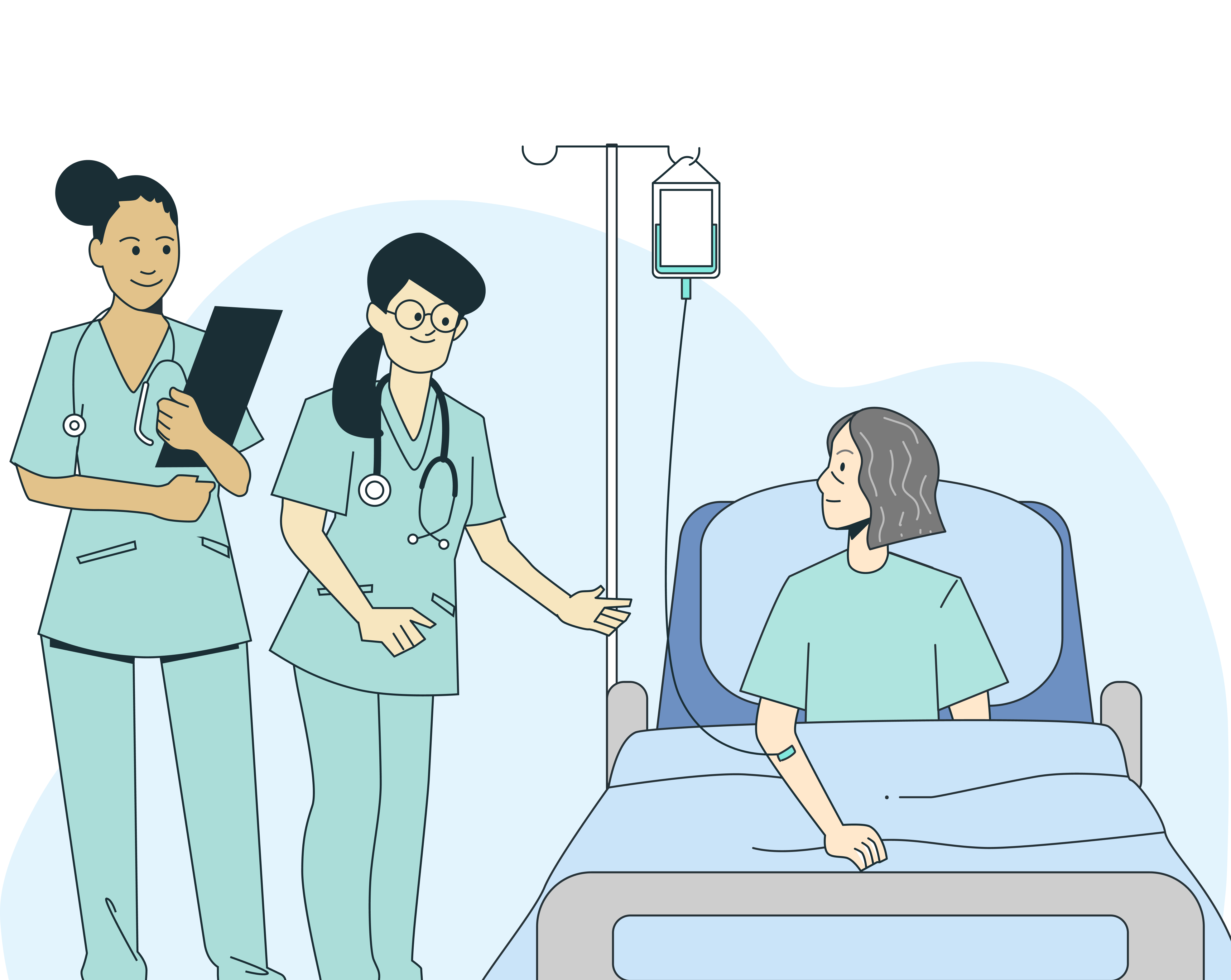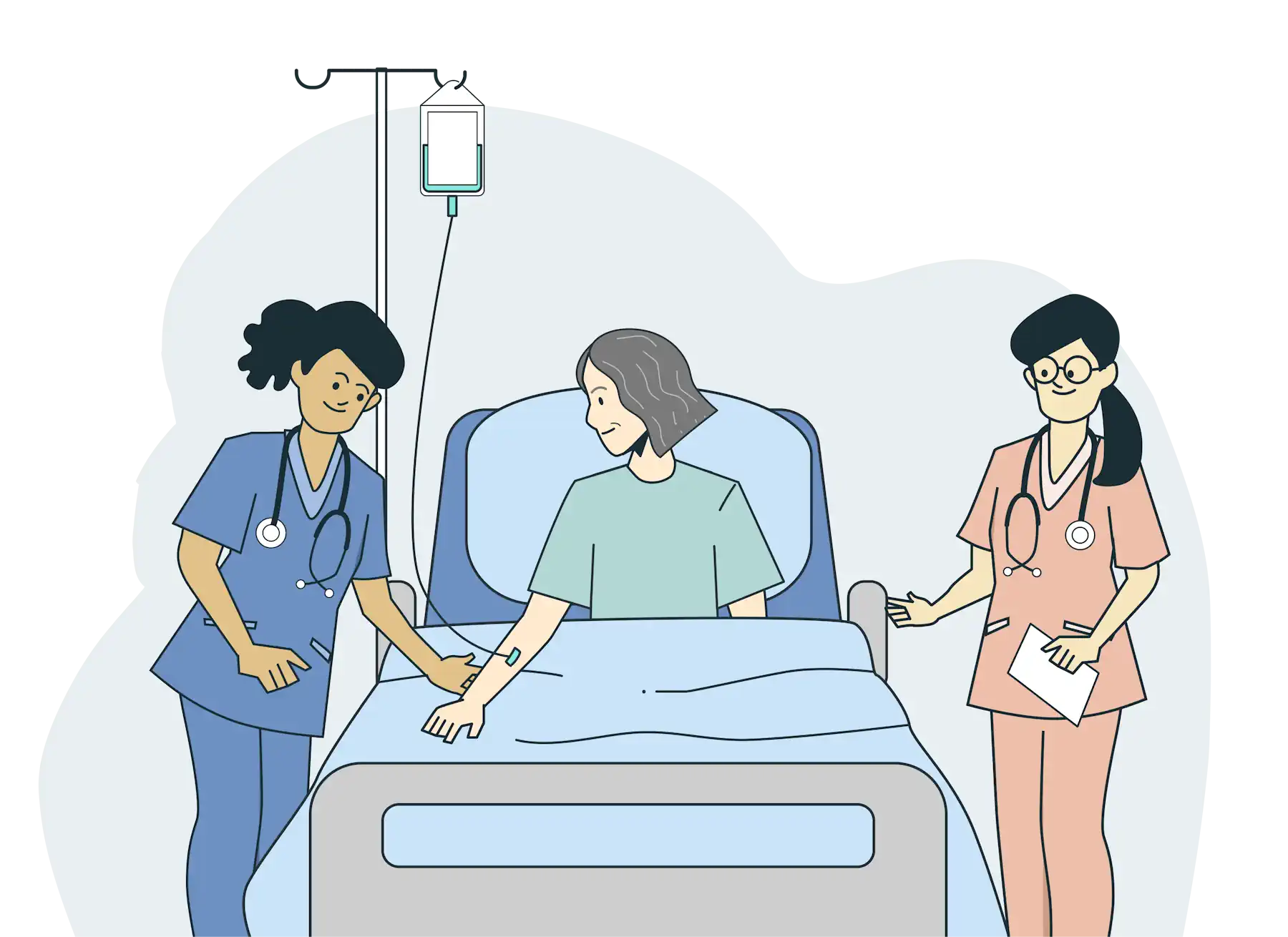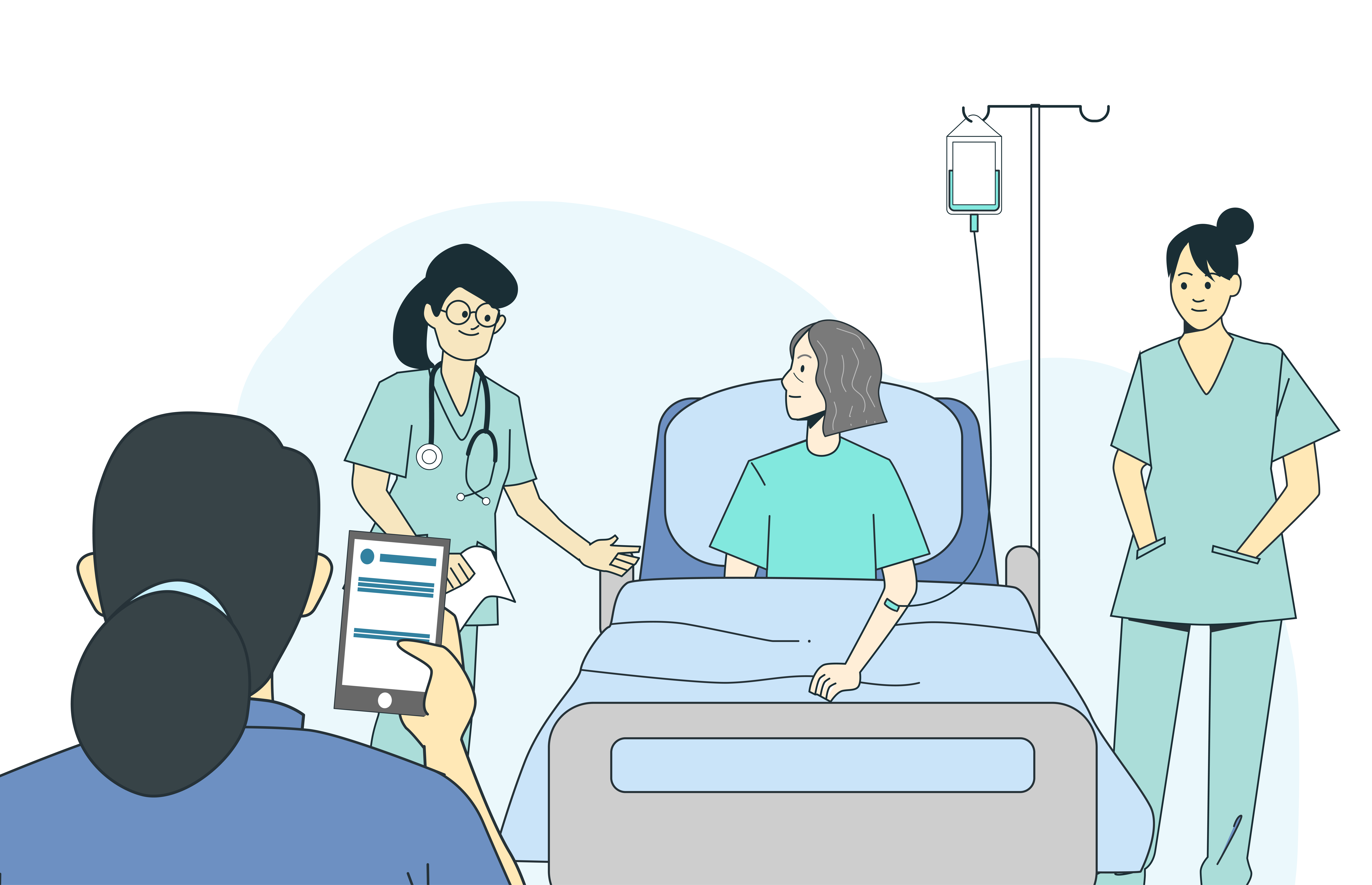Structured Bedside Handover
Faster For Nurses, Safer For Patients
Nurses dread getting bad patient handoffs where there is no structure, making handoff less safe and more stressful. Structured Bedside Handover standardizes each handover with a structured, single-page shift report form. It uses an ISBAR framework, Review of Systems outline, and it’s customized for each unit. This form is presented top to bottom by the outgoing nurse, then handed over with our patient.
We find nurses much prefer this nurse-designed form over the EMR and its overstuffed SBAR screen. We believe standardized nursing communication should be made as easy as possible. The best tools simplify what’s complex, without losing detail.
Nurses First™ Structured Bedside Handover Features
- Structured for better clinical handover
- Warm, professional, & brief (3-5 min)
- At bedside with patient invited to participate
- Ensures oncoming nurse starts with information needed for continuity, safety, patient advocacy and rounds readiness
- Helps off-going shift leave on time
Hear the difference yourself
Why Nurses Like It
Frequent Questions
Bedside Handover is a brief, structured shift report presented by the outgoing nurse to the oncoming nurse and the patient. It empowers the patient and the oncoming nurse to verify information being reported, to hear the status of nursing-sensitive quality and safety indicators, and to start the shift on the same page with the patient’s subjective goal – what the patient cares most about.
The Nurses First implementation of Bedside Handover elevates shift report from a task to an elite competency – with specific skills to learn, practice, and verify.
Bedside Handover Excellence
Using a standard bedside handover form offers consistency in the data but not necessarily the handover. Having a policy and having it performed with excellence on the front lines can be two different realities.
Elevating Bedside Handover from a task to a skill that is practiced every shift enables nurses to become experts through mastering these new skills. The winning recipe is the same: Learning, Practice, and Feedback.
Follow the list of high-performance behaviors that make Bedside Handover go really well for everyone.
Set a goal for units to achieve Bedside Handover Excellence, which means all nurses are verified as experts in Bedside Handover and the process is running effectively.
That’s what makes it stick. Notice a better start and end to shifts, better use of everyone’s time, and better care, both for patients and each other.



